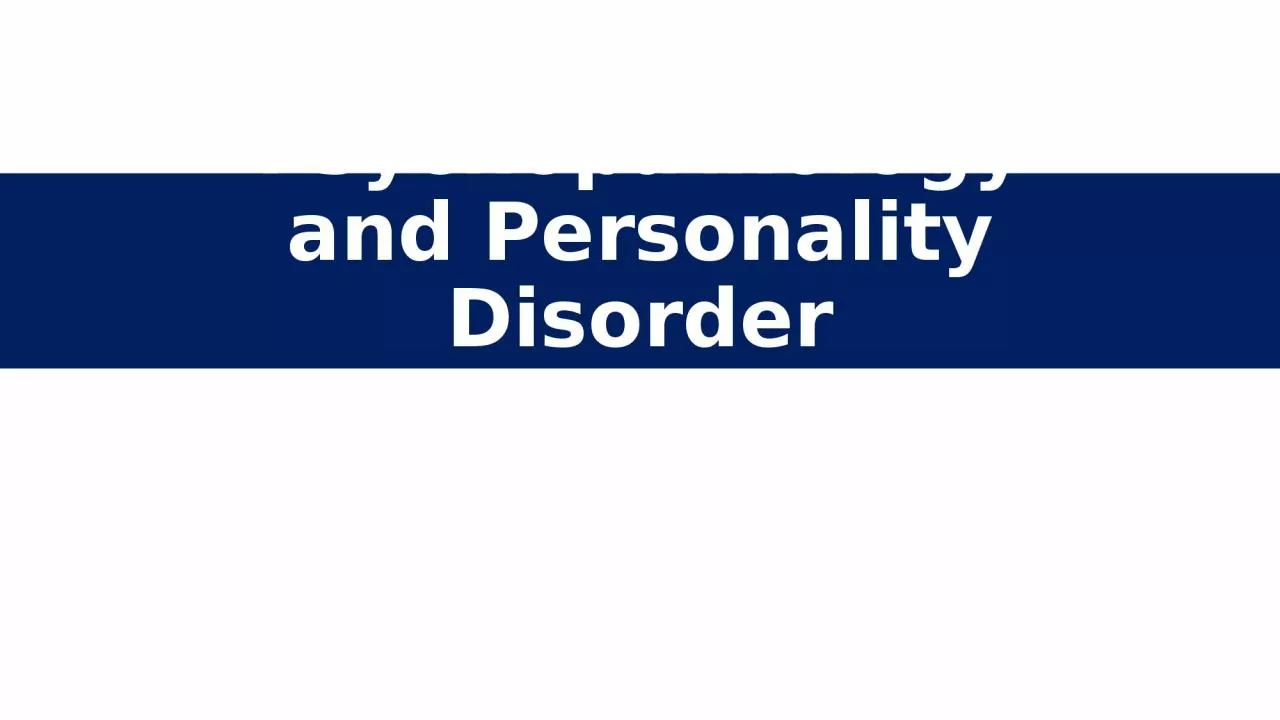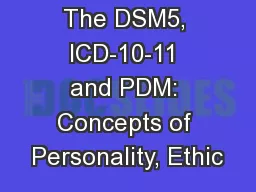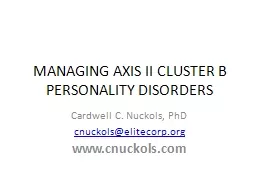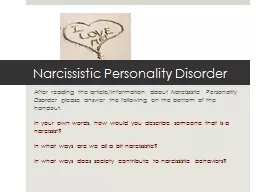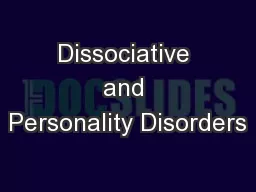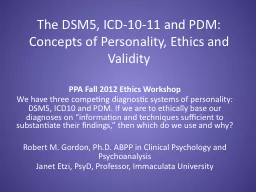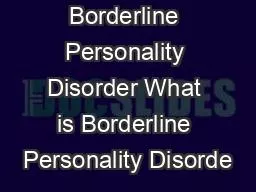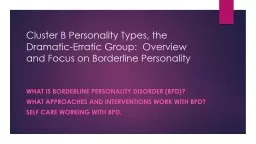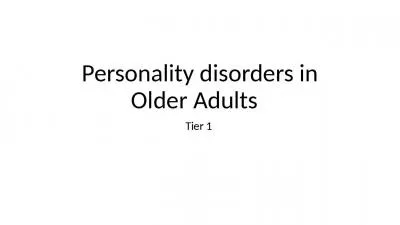PPT-Psychopathology and Personality Disorder
Author : iris | Published Date : 2022-06-07
What is Psychopathology Psychopathology is a term which refers to either the study of mental illness or mental distress or the manifestation of behaviours and experiences
Presentation Embed Code
Download Presentation
Download Presentation The PPT/PDF document "Psychopathology and Personality Disorder" is the property of its rightful owner. Permission is granted to download and print the materials on this website for personal, non-commercial use only, and to display it on your personal computer provided you do not modify the materials and that you retain all copyright notices contained in the materials. By downloading content from our website, you accept the terms of this agreement.
Psychopathology and Personality Disorder: Transcript
Download Rules Of Document
"Psychopathology and Personality Disorder"The content belongs to its owner. You may download and print it for personal use, without modification, and keep all copyright notices. By downloading, you agree to these terms.
Related Documents

